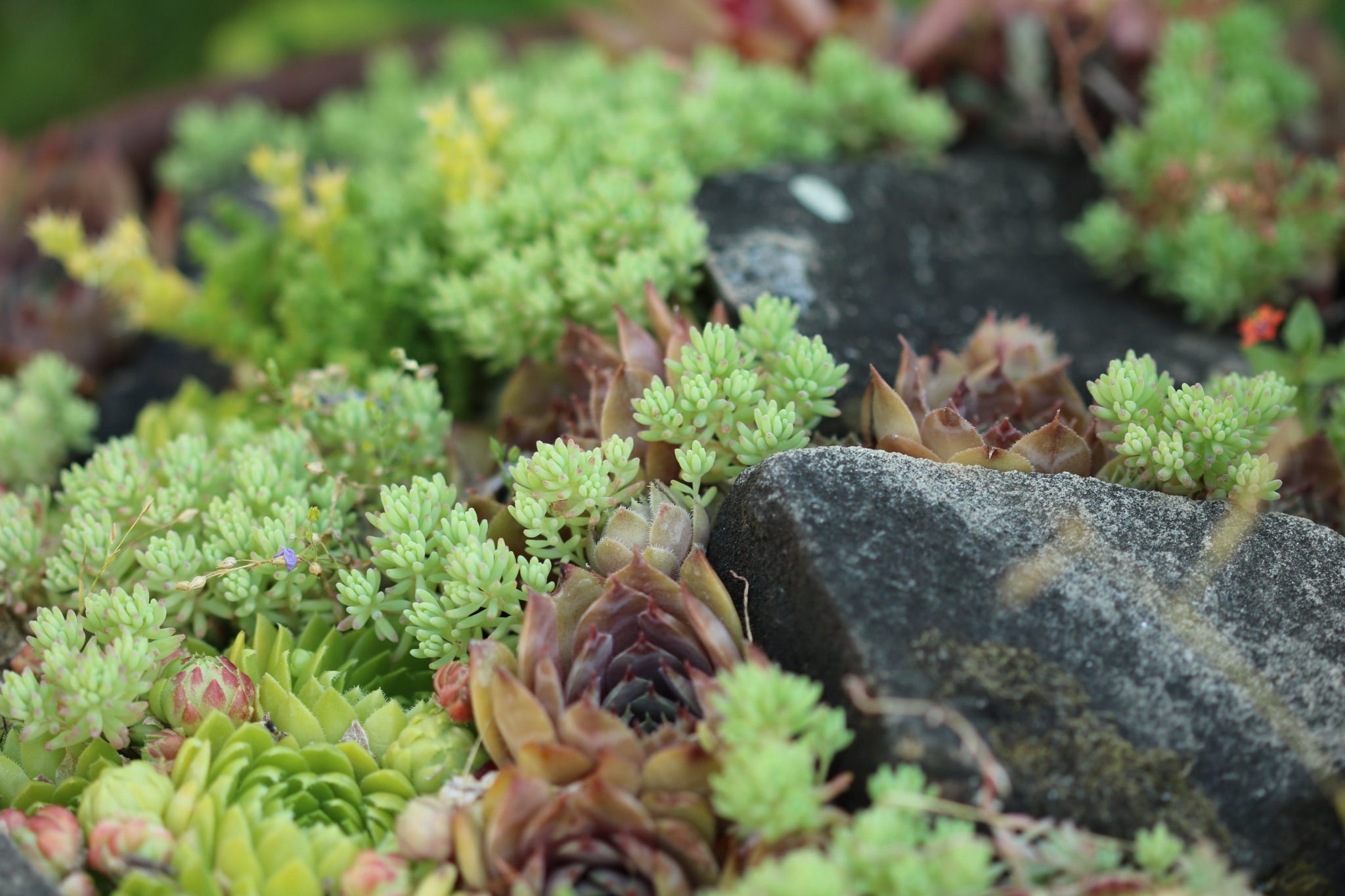

Rockeries are one of the decorative elements that are best in gardens, especially in those that are in places where the climate is warm. But although we are more used to seeing them in, for example, the Mediterranean region where the frosts are quite mild, that does not mean that we cannot enjoy them in our particular paradises that are covered with snow every year.
In fact, there are many rockery plants that resist frost. Some are more rustic than others, but all of them are beautiful. If you don’t believe me, take a look at our selection .
If you have a corner that has been left empty in your garden and you want to give it a ‘good’ life, then one of the things you can do is turn it into a magnificent rockery. For it, the most important thing you have to take into account when choosing plants is their hardinessBecause if you buy one that you love but then it turns out to be tropical, if the temperature drops below 10ºC in your area, you will most likely lose it.
To prevent this from happening to you, below we will show you a series of plants that can live without problems in temperate zones, with mild or hot summers, and with mild or cold winters.
10 rockery plants that resist frost
The new options are the following:
montane sandstone


Image – Wikimedia / Stephencdickson
The montane sandstone a herbaceous plant native to the mountainous regions of southwestern Europe that grows to a height of about 20 to 30 inches. The leaves are green, 1 to 3 centimeters in size, and its flowers are pedunculated, with a white corolla and 2 centimeters in diameter.
Resists up to -4ºC.
cineraria maritime


The cineraria maritimenow call Jacobaea maritimais an evergreen subshrub native to the Mediterranean region. It can reach a height of up to 1 meterand develops alternate, pinnatipartite leaves, with the upper surface glabrous and the underside densely white and tomentose, of a silver-gray color. The flowers appear in summer, and they are yellow.
Resists up to -10ºC.
Dimorphotheca


Dimorphotheca are a genus of perennial herbaceous plants native to southern Africa. They can reach heights between 30 and 100 centimetersand they develop green leaves, with an alternate arrangement, elliptical shape and somewhat succulent. The flowers resemble those of daisies, and are of different colors: pink, white, orange, red. These sprout from spring to almost fall.
It resists frosts down to -5ºC.
Gazania freezes


The Gazania freezes is a perennial herb native to South Africa and Mozambique that reaches a height of about 30-50 centimeters. Its leaves are lanceolate, with a dark green upper surface and a glabrous underside. During spring and summer it produces yellow, orange, red or bicolor flowers that open only when the clouds show the sun.
It resists frosts down to -5ºC.
Gypsophila repens


Image – Flickr / Udo Schmidt
The Gypsophila repensor dawn, is a rhizomatous plant native to Europe that reaches a height of about 20 centimeters. The leaves are greyish-green in color, and somewhat succulent. The flowers are small, barely 1 centimeter in diameter, white or pink.
Resists up to -5ºC.
sorghum brought down


Image – Wikimedia / Jerzy Opioła
The sorghum brought downknown as Irish moss, is a creeping and upholstery plant native to Europe, from Iceland to Spain, passing through southern Sweden and Romania. Reaches a height of 10 centimeterswith subulate and thin leaves of up to 1 centimeter. The flowers are small, 4-5mm in diameter, and are composed of five white petals.
Resists up to -10ºC.
saponaria ocymoides


Image – Wikimedia / Flower by Meneerke
The saponaria ocymoides it is a lively plant that grows between 10 and 30 centimeters tall native to the Mediterranean region. The leaves are spatulate, 1 to 3 centimeters long, and it produces flowers with red or pink petals, sometimes white.
Resists up to -4ºC.
The seat is sharp


Image – Benjamin Zwittnig
The The seat is sharp It is a succulent perennial herb native to Europe, where it usually grows in rocky areas and walls near the coast. Reaches a height of 5 to 12 centimeterswith fleshy green leaves. The flowers, which sprout in spring-summer, are star-shaped, and are composed of five bright yellow sepals and petals.
It resists frosts down to -4ºC.
A white seat


Image – Wikimedia / xulescu_g
The A white seat is a succulent perennial herb native to Europe that reaches a height of up to 30 centimeters. The leaves are alternate, glabrous and almost cylindrical in shape. The flowers gather in corymbs, and are white.
Resists up to -5ºC.
Kamtschatic seat


Image – Wikimedia Commons / Stan Shebs
The Kamtschatic seat is a succulent perennial herb native to Europe that reaches a height of 15 to 40 centimeters. The leaves are alternate or opposite, 2 x 3 centimeters, green in color. In spring it produces yellow flowers.
It resists frosts down to -23ºC.
As you can see, there are many plants that will be useful to get a dream rockery, even if there are strong frosts in your area. So do not hesitate to get some of the ones that we recommend. You will surely enjoy having them.
